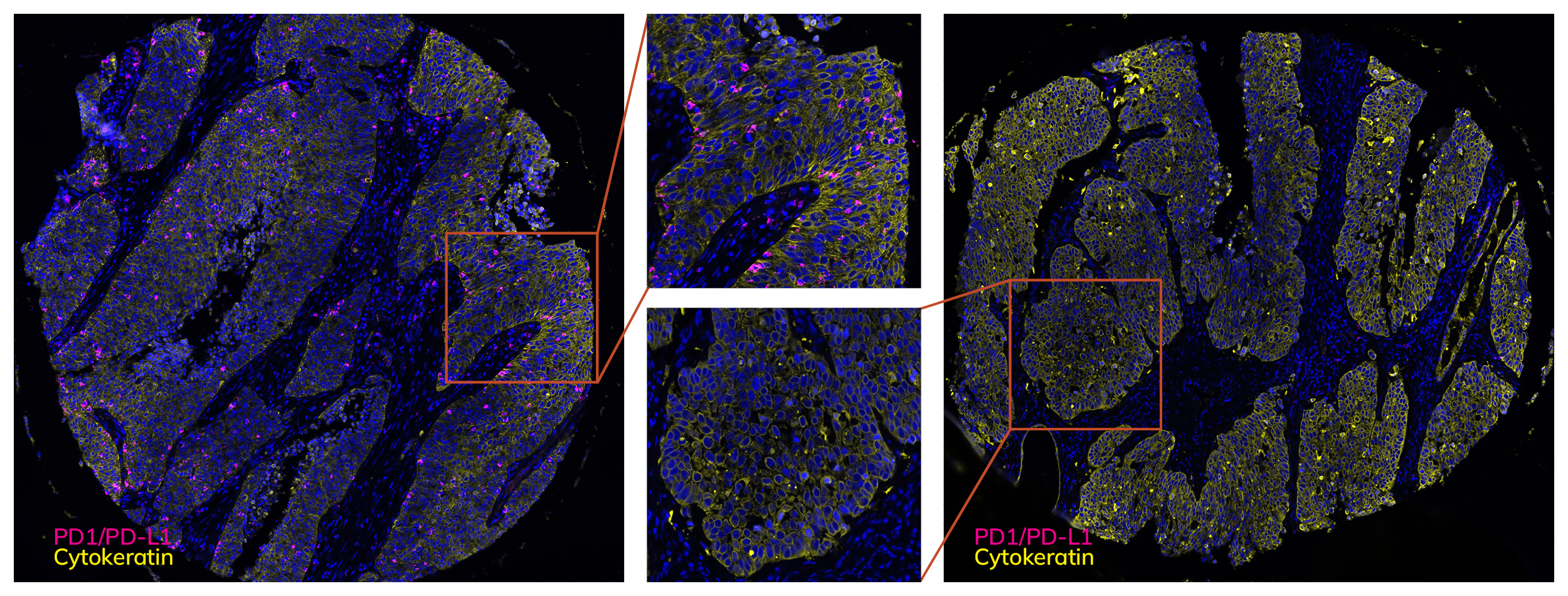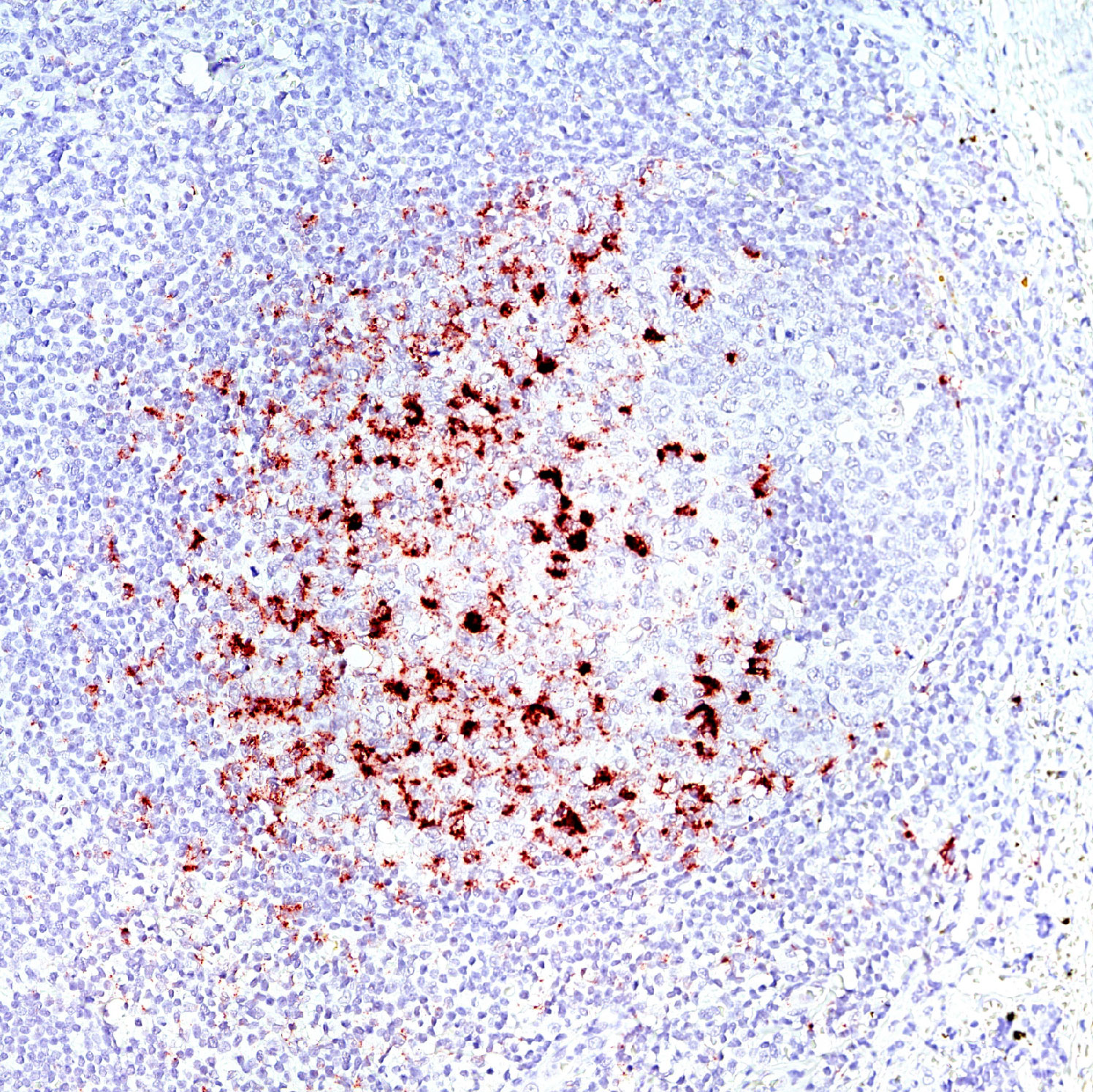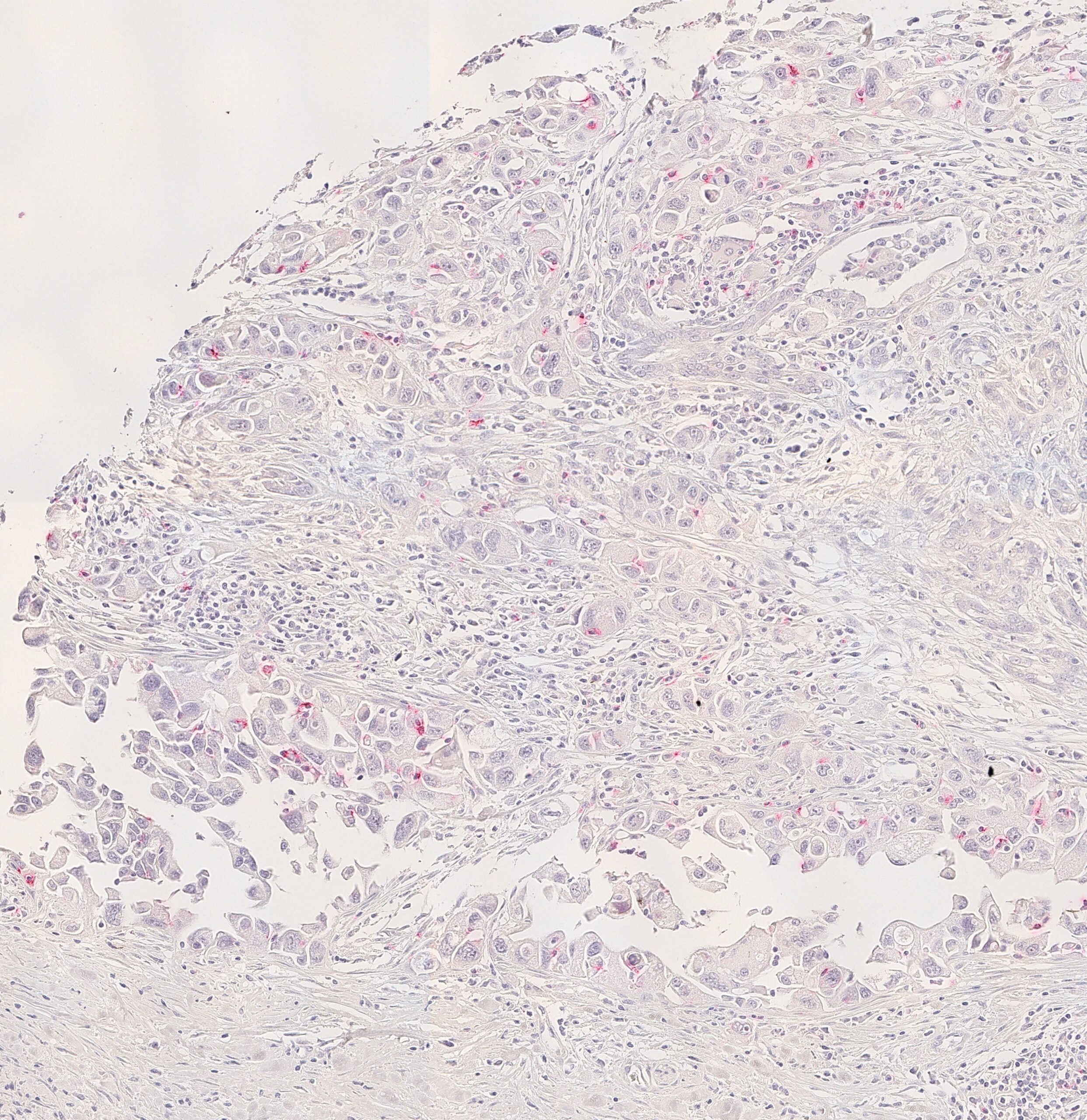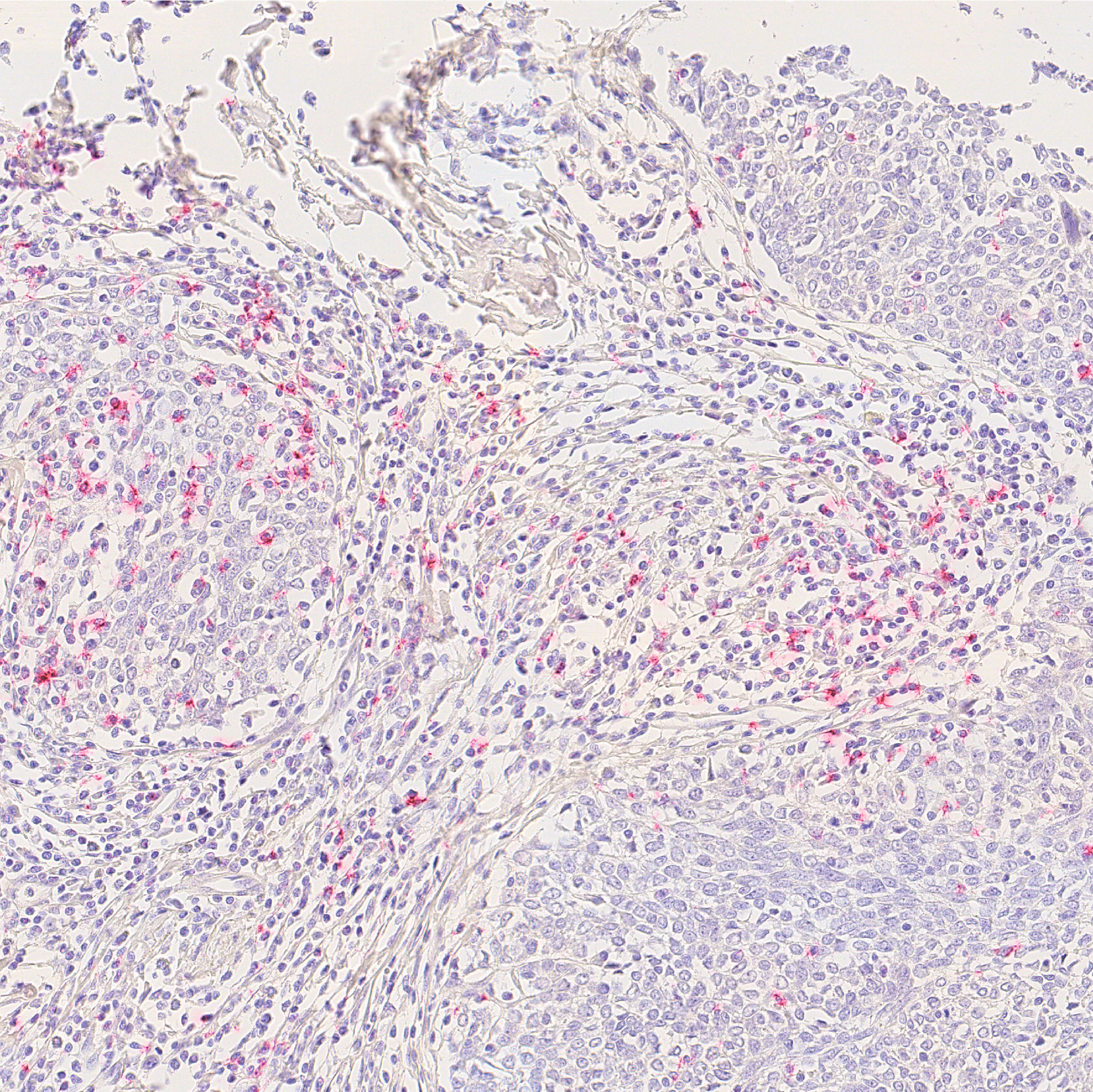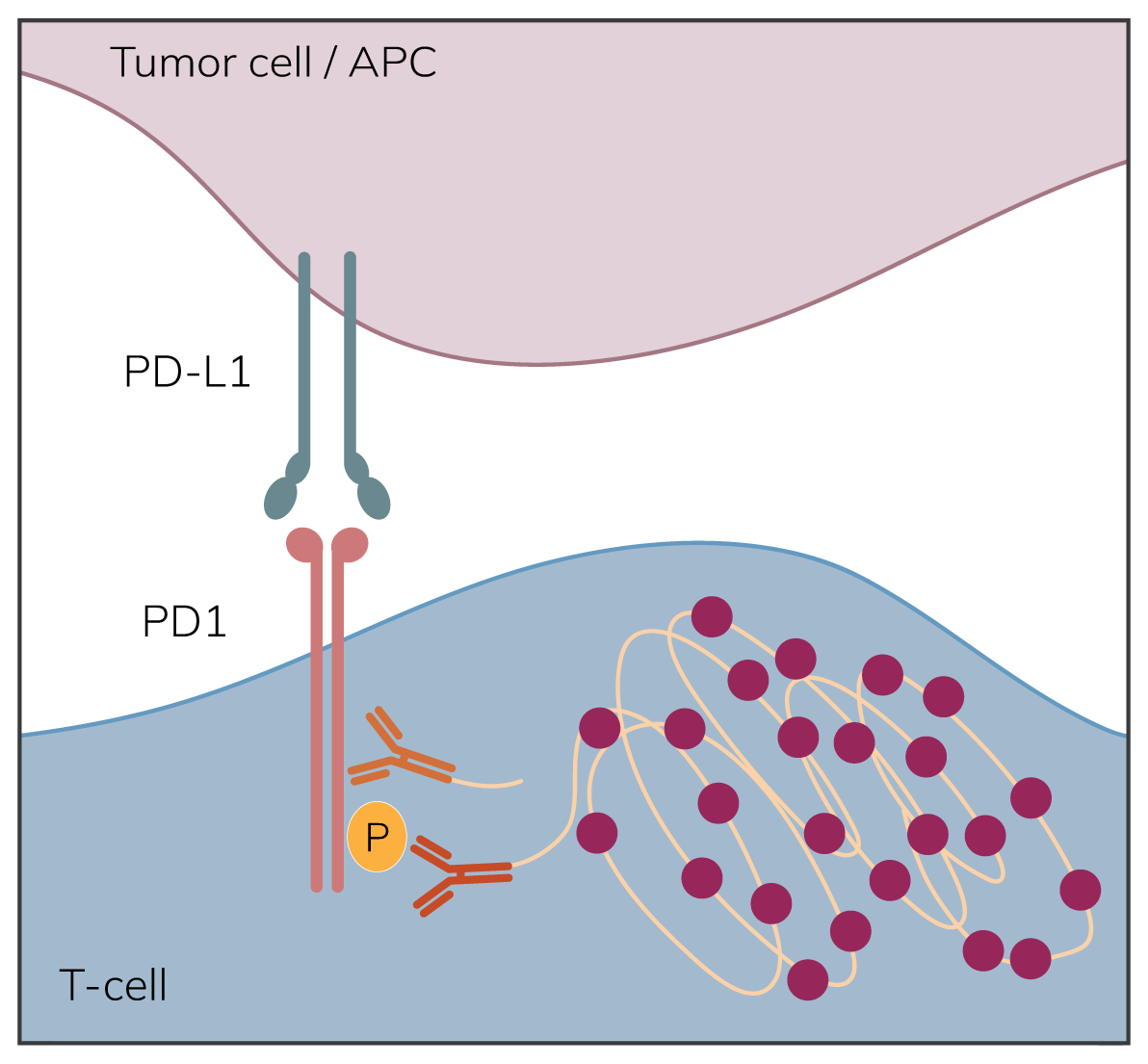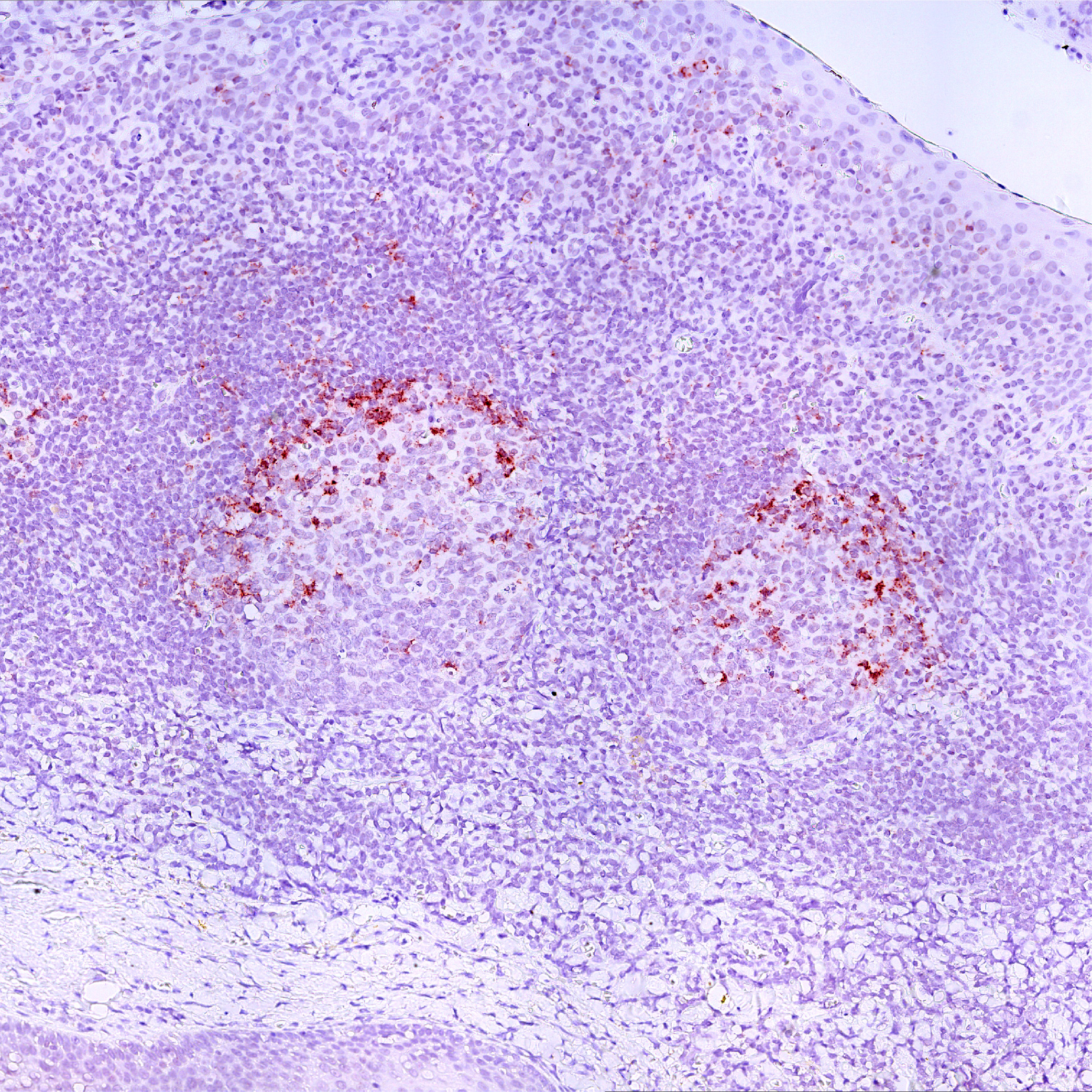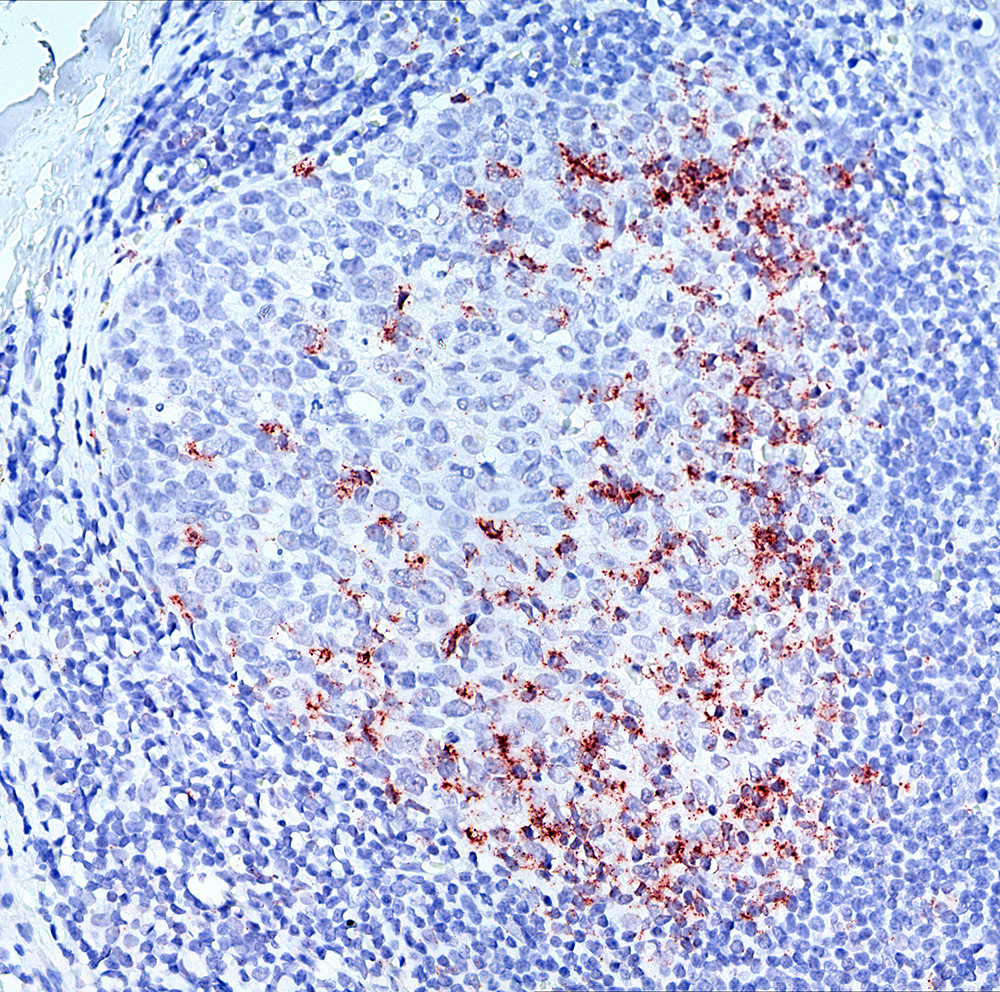Unlocking the potential of immune checkpoint inhibition therapy calls for precise patient stratification 1-3. While PD-L1 is a commonly used biomarker, its correlation with immunotherapy outcomes isn’t always linear3. Addressing this challenge, Navinci expands its portfolio to unravel PD1 signaling, introducing the groundbreaking fluorescent assay, Naveni™ PD1/PD-L1 Atto 647N.
With Naveni™ PD1/PD-L1 Atto 647N, you can now achieve a comprehensive visualization of the tumor microenvironment through co-staining. Illuminate PD1/PD-L1 interactions like never before and gain a deeper understanding of immune checkpoint activation.
If you prefer to detect PD1/PD-L1 using bright-field, we have you covered with our chromogenic assays. Choose from our range of assays to suit your specific research needs and explore the PD1 signaling pathway.
Download white paper: Identifying PD-1/PD-L1 interactions – Implications for clinical research and ICI patient stratification(pdf)
